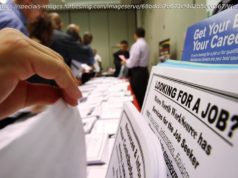AP Images Ten-year Treasury yields have more than doubled since the 35-year low of 1.36% was reached in June 2016. Yet by…
AP Images
Ten-year Treasury yields have more than doubled since the 35-year low of 1.36% was reached in June 2016. Yet by historical standards yields are still low, remaining under 3%. With inflation rising, the Federal Reserve reducing its balance sheet, and rising budget deficits as far as the eye can see, there are plenty of reasons to expect yields to move higher from here. We are often asked: How high do we expect bond yields to go in this cycle?
We don’t have a crystal ball, and usually advise against trying to time the market. However, investors often ask for an estimate for planning purposes. To answer that question, we can look at some metrics that have been useful in the past and may provide some helpful guidance for this cycle. Here are three that we can use to estimate where 10-year Treasury yields may peak.
In past cycles, 10-year bond yields and the federal funds rate have peaked around the same level
Charles Schwab
In the current cycle, the Fed is projecting that the fed funds rate will reach 2.9% at the end of 2019 and for the „longer run.“ On that basis, we could estimate that bond yields may be very near the peak level for this cycle. The caveat is that the Fed’s projections are updated regularly and may move higher. However, it may explain why 10-year yields have not managed to move through the 3% level to date.
2. Normal includes a higher risk premium. A second approach is to look at what a „normal“ yield has meant historically. In theory, bond yields should reflect the weighted average expected short-term interest rates plus a risk premium. Since the major central banks engaged in their bond buying programs (quantitative easing), the risk premium was suppressed. It actually has been negative for much of the past few years as the market saw little risk of inflation or tighter monetary policy globally.
Now, however, inflation is beginning to pick up, and the Fed is unwinding its balance sheet and raising short-term interest rates. Foreign central banks are moving toward tighter policy as well. The Bank of England recently raised its base rate, the European Central Bank is tapering its bond purchases and even the Bank of Japan is hinting at exiting its quantitative easing program. Consequently, it would be reasonable to expect the risk premium to increase over the next few years.
The term premium is currently estimated to be -0.48%
Charles Schwab
Since the term premium is currently estimated to be -0.48%, we could add this amount to the current 10-year Treasury yield of 2.8% and assume that a return to „normal“ monetary policy over the next few years would push yields up enough for the term premium to move back into positive territory. However, with global yields still significantly below U. S. bond yields and foreign central banks still maintaining very easy policies, it’s unlikely to move significantly higher unless there is substantially more evidence of higher global growth and inflation. Adding 48 basis points to 2.8% would give us an estimate of about 3.25% to 3.30% for 10-year yields.
3. Watch inflation expectations. In a similar fashion, we could look at expectations for inflation and assume that bond yields should provide investors with a positive „real“ return over time. As the trend in inflation has declined over the past few decades, nominal yields have fallen more than inflation, resulting in lower real yields. In the five years leading up to the onset of the financial crisis, nominal ten-year Treasury yields averaged 4.4% while consumer price index (CPI) inflation averaged 2.9% for a „real yield“ of about 1.5%. The expected inflation rate over the next five years, as measured by the 5-year, 5-year forward inflation expectation rate, is currently about 2%. Adding a 1.5% premium to the expected 2% inflation rate would imply an average nominal treasury yield of 3.5% over the next five years.
Charles Schwab
The caveat for this approach is that inflation has failed to live up to expectations for many years, despite the huge amount of stimulus provided by central banks around the world. Achieving an average 2% inflation rate over five years may prove difficult, especially if there is a recession during that time. Currently, the St. Louis Federal Reserve’s Price Pressure Measure indicates a less than 5% probability that the price index for personal consumption expenditures (PCE deflator) will exceed 2.5% in the year ahead. Markets may be overly optimistic about rising inflation.
The implication of these three approaches suggests that the peak in longer-term Treasury yields may lie between 2.9% and 3.5% over the next year or two. However, there is no perfect way to estimate the peak in yields or the timing. Bond yields depend on the pace of economic growth both domestically and globally, central bank policies and—most crucially—inflation prospects.
For investors, the good news is that short- to intermediate-term bond yields are now providing nearly as much yield as 10-year Treasuries. Two-year Treasury yields are 2.4% and intermediate-term investment-grade corporate bonds are offering yields of 3.5%. 1 For those investors who are concerned about rising long-term rates, the alternative of staying in short- to intermediate-term high-quality bonds looks relatively attractive.
For those investors who don’t want to engage in the process of trying to time the market, bond ladders can be a good strategy. By staggering the maturities of your bonds over time, you can stay invested but still have the flexibility to reinvest at higher yields if the opportunity comes up
With the prospect of continued rising yields on the horizon, many investors question the value of holding bonds at all. The major reasons are for diversification from stocks, capital preservation and income. Those reasons don’t change whether interest rates are rising or falling.






